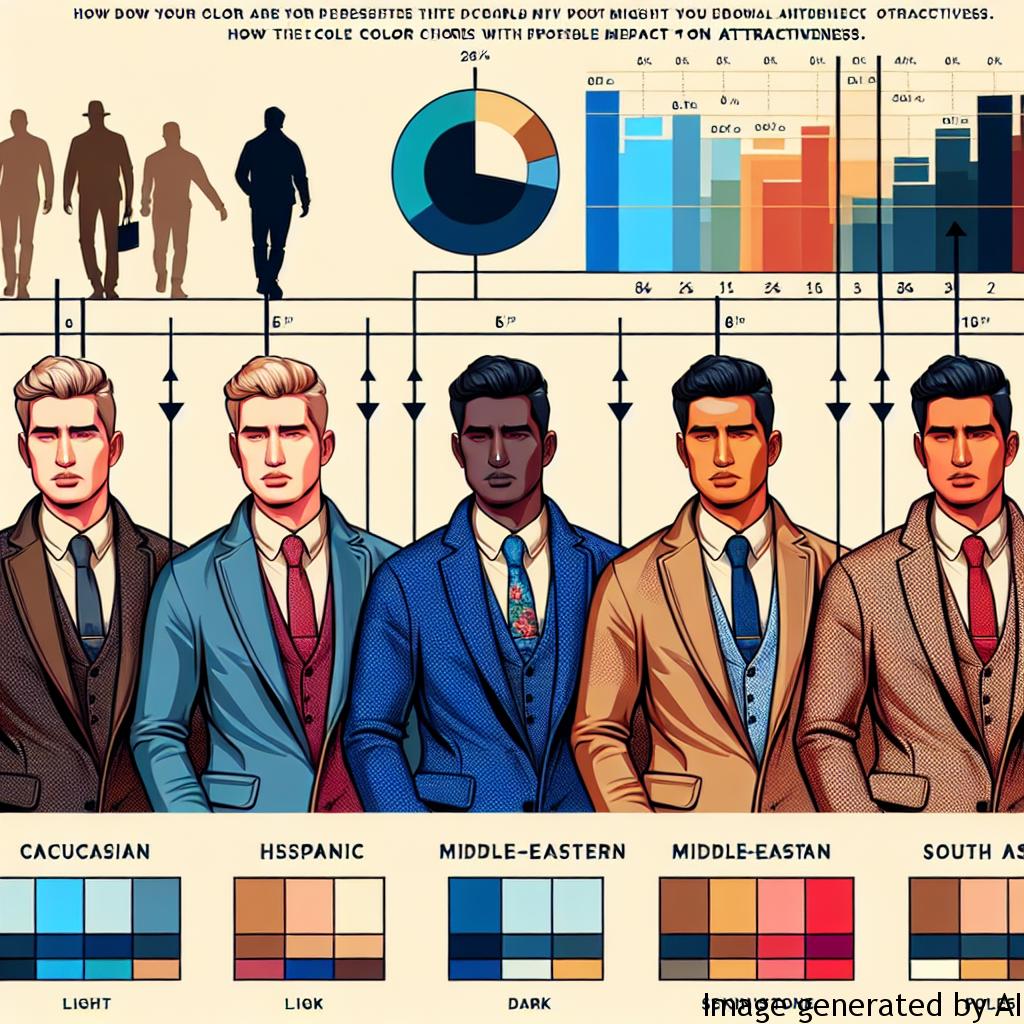Introduction
Color is a fundamental aspect of human life that most individuals take for granted. It plays a significant role in different areas, such as moods, behaviors, and decision-making processes. Interestingly, it also significantly impacts attractiveness in men’s clothing. In the fashion world, the choice of color in clothing often reflects an individual’s personality, taste, mood, and sometimes is connected with the societal gender norms and expectations. This article explores the role color plays in men’s clothing and its impact on attractiveness, gender expectations, and psychological health.
Gender Expectations and Their Impact on Men’s Psychological Health
The color spectrum in men’s fashion has traditionally ranged from neutral tones to cooler shades. This is mainly due to gender expectations set by society.
Gender Stereotypes and The Choice of Color
In many societies, some colors are considered masculine, while others are perceived as feminine. For instance, bright and bold colors like pink or purple were usually associated with femininity and often avoided in men’s clothing. Such gender stereotypes can limit men’s choices when it comes to experimenting with different colors, leading to personal unhappiness and dissatisfaction.
Psychological Impact
Conducting life within these strict gender bound color ‘rules’ may lead to psychological stress and negative self-perception for some men. Being deprived of the freedom to express themselves through color may compromise their sense of identity, ultimately impacting their psychological well-being.
Examples of How Gender Roles Can Influence Men’s Lives
Traditionally, men have been expected to dress in darker, muted tones to exude an aura of formalness, power, or seriousness. For instance, you will commonly find men in professional settings dressed in black, navy, or grey suits. However, these societal rules restrict men from wearing colors that may reflect their personality or mood better. For instance, a man who loves the color pink might refrain from wearing it due to societal judgment or risk seeming less masculine.
Tips on Enhancing Psychological Health Considering Gender Roles
It’s high time society liberates itself from the shackles of rigid gender-based color norms. For a healthier perspective towards fashion and self-expression, men should be encouraged to experiment with a broader range of colors.
Embrace the Rainbow
Don’t shy away from vibrant colors. If you adore a color, don’t let societal norms stop you from wearing it.
Express Yourself
Your wardrobe should be a reflection of your identity and taste. Wear color combinations you feel comfortable and confident in. This confidence increases your attractiveness exponentially.
Seek Professional Help
If you are struggling with self-expression and the impact of societal norms, speak to a professional. Therapists can provide tools and resources to help you navigate your feelings.
Conclusion
Color in men’s clothing isn’t just about fashion or aesthetic appeal. It is intricately tied to gender norms, personal expression, societal expectations, and psychological health. Whilst colors can enhance attractiveness, preference for colors should be a personal choice devoid of societal pressures and stereotypes. It’s crucial to see colors for what they truly are – personal tools for expression and avenues of creativity and individualism. If this view is embraced, not only will men feel free to express themselves, but also discover an avenue to enhance their attractiveness and psychological health.

